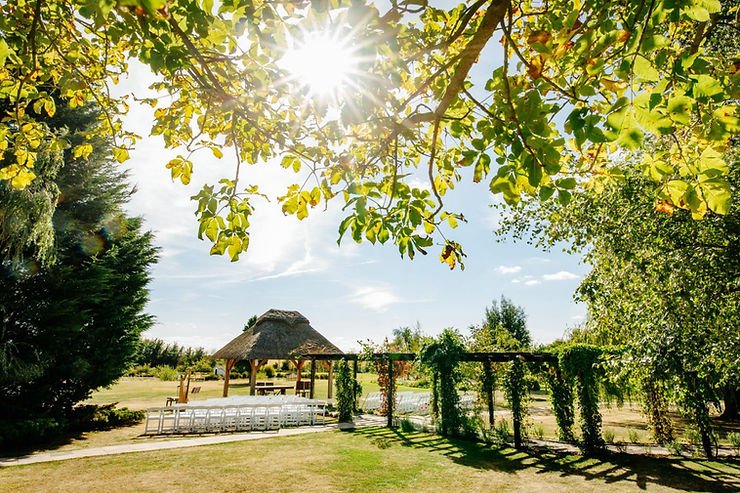How To Design A Low Maintenance Garden
A beautiful garden doesn’t have to mean endless hours of upkeep. Designing a low maintenance garden allows you to enjoy a vibrant and attractive outdoor space without the constant weeding, pruning, and watering that traditional gardens often demand. Whether you’re a busy professional, a novice gardener, or simply prefer to spend your time enjoying your garden rather than working in it, this guide will help you create a stunning garden that’s easy to care for.
1. Choose the Right Plants
The foundation of a low maintenance garden is selecting the right plants. Opt for hardy, drought-tolerant varieties that thrive in your local conditions. Native plants are usually a safe bet as they are well adapted to the local climate and soil, making them more resistant to pests and diseases.
Consider using perennials that return year after year with minimal intervention. Evergreens provide structure and year-round interest without the need for seasonal replanting. Low maintenance favourites include lavender, rosemary, and ornamental grasses, which require little more than occasional trimming. Shrubs like boxwood or hebe can also provide long-lasting greenery with minimal upkeep.
2. Reduce Lawn Area
Lawns can be one of the most time-consuming elements of garden maintenance, requiring regular mowing, feeding, and watering. To cut down on this effort, consider reducing the size of your lawn or replacing it altogether.
Alternatives to grass include ground covers such as creeping thyme, which provides a green carpet with the added bonus of aromatic blooms, or gravel, which is both practical and stylish. For a softer look, artificial grass can offer a lush appearance without the need for mowing or watering, making it ideal for smaller spaces or play areas.
3. Embrace Mulching
Mulching is one of the simplest ways to cut down on garden maintenance. A thick layer of mulch around your plants helps to suppress weeds, retain moisture, and improve soil quality, all while reducing the need for frequent watering and weeding.
Organic mulches, such as bark chips, straw, or compost, gradually break down and enrich the soil. Inorganic options like gravel or slate chippings offer a more permanent solution and can complement modern garden styles. Whichever you choose, aim to apply a 5-10 cm layer around your plants, taking care not to cover stems or trunks.
4. Install Automatic Irrigation Systems
Watering can be a laborious task, especially during dry spells. Installing an automatic irrigation system, such as a drip or soaker hose system, can ensure your plants get the right amount of water with minimal effort. These systems deliver water directly to the roots, reducing waste and promoting healthier growth.
Consider setting up a timer to water early in the morning or late in the evening, which minimises evaporation and helps your garden make the most of each drop. Rainwater harvesting systems can also be integrated to make your garden even more sustainable and reduce your reliance on tap water.
5. Opt for Low Maintenance Hardscaping
Hardscaping refers to the non-plant elements of your garden, such as patios, pathways, and walls. Choosing low maintenance materials for these features can significantly reduce the upkeep required.
Paving with natural stone, porcelain, or gravel provides a durable surface that requires little more than occasional cleaning. Raised beds made from treated timber or stone not only add structure but also reduce the need to bend down for weeding or planting. Similarly, composite decking is a great alternative to traditional wood, offering the look of timber without the regular sealing and staining.
6. Easy Access Garden Design
When planning your garden layout, consider accessibility. Wide, level paths make it easier to navigate your garden and carry out necessary tasks like pruning or harvesting. Raised beds can be particularly useful, allowing you to garden at a comfortable height and reducing the strain on your back and knees.
Grouping plants with similar needs together, such as those that require the same amount of sunlight or water, can also streamline maintenance. This practice, known as companion planting, not only makes caring for your garden more efficient but can also benefit plant health by deterring pests and improving growth conditions.
7. Minimise Weeds with Ground Cover and Barriers
Weeds are a common garden nuisance, but they can be kept in check with a few strategic choices. Ground covers like sedum or creeping juniper not only add visual interest but also help to smother weeds by blocking light from reaching the soil.
Using landscape fabric beneath gravel or bark mulch can further prevent weed growth. These fabrics allow water and air to pass through while creating a barrier that inhibits weeds. For an even lower maintenance option, consider installing weed-suppressing membranes under patios or pathways.
8. Incorporate Low Maintenance Features
Adding low maintenance features like containers, sculptures, or water features can enhance your garden’s appeal without increasing the workload. Containers are versatile and easy to manage, allowing you to change plantings seasonally or move them to optimise sunlight.
Water features, such as a small pond or a self-contained fountain, can add a sense of tranquillity and attract wildlife without requiring extensive maintenance. Opt for features with built-in filters or pumps to keep the water clean with minimal intervention.
Conclusion
Designing a low maintenance garden doesn’t mean sacrificing style or interest. By making thoughtful choices about plants, hardscaping, and garden layout, you can create an attractive outdoor space that suits your lifestyle and reduces the time you spend on upkeep. Embrace native plants, reduce lawn areas, and consider efficient watering solutions to keep your garden looking its best with minimal effort. Ultimately, a low maintenance garden allows you to enjoy the beauty of nature with more time to relax and less time working in your garden.

Recent Posts




